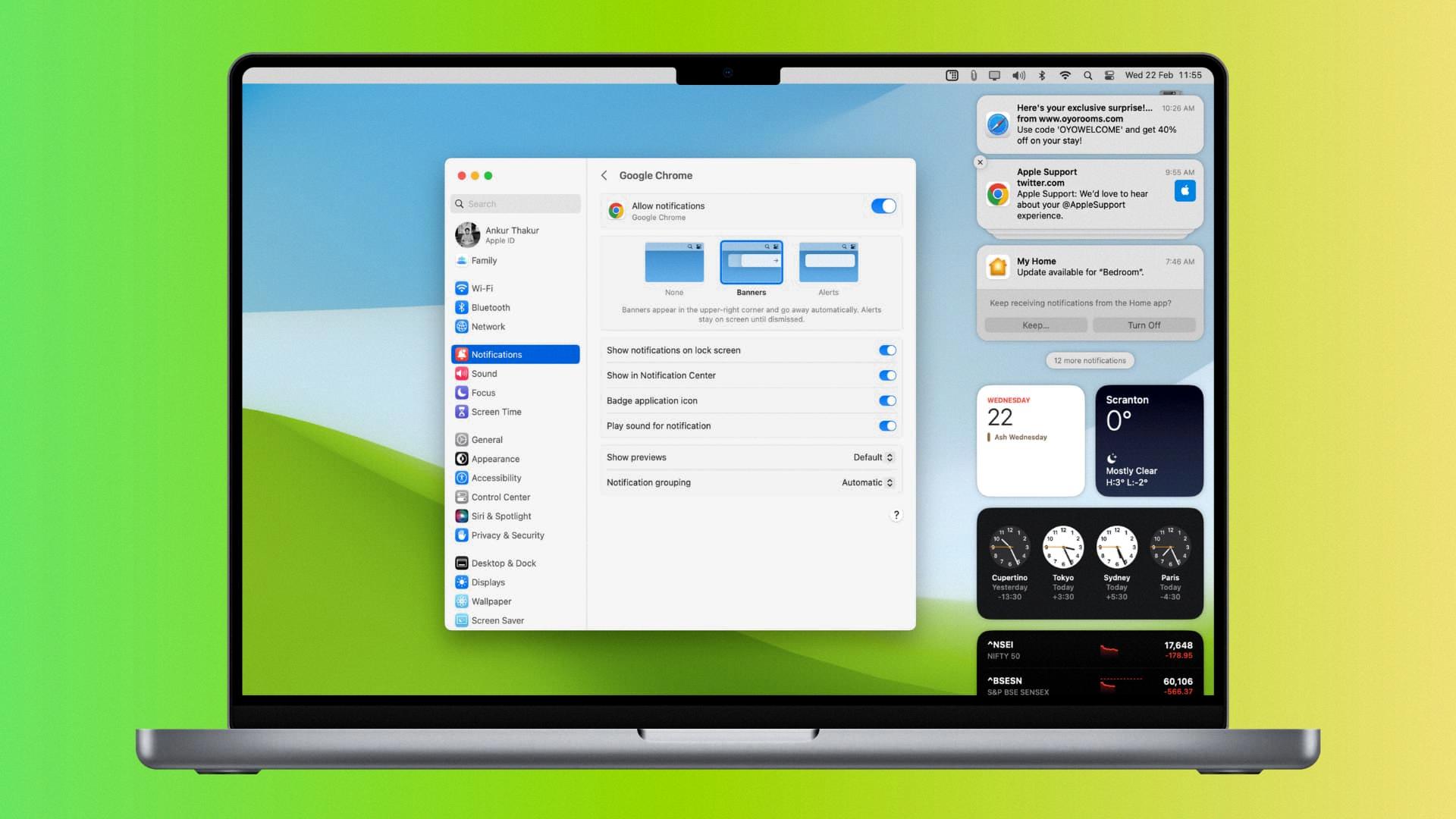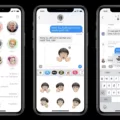If you’re a Mac user, you may have encountered a frustrating issue where the notification center is not showing up on your screen. This can hinder your ability to stay updated with important notifications and alerts. In this article, we will explore some possible solutions to this problem.
Firstly, let’s address how to open the notification center on your Mac. There are a couple of ways to do this. One way is to click on the date and time in the menu bar at the top right corner of your screen. Another method is to swipe left with two fingers from the right edge of the trackpad. However, before you can access the notification center, you need to ensure that you have given permission for notifications.
To grant permission, follow these steps:
1. Click on the Apple menu icon in the top left corner of your screen.
2. Select “System Preferences” from the dropdown menu.
3. In the System Preferences window, click on “Notifications.”
4. Under the “Application Notifications” section, you will see a list of apps. Choose the app from which you want to receive notifications.
5. Toggle on the “Allow Notifications” option.
6. You can further customize the settings by enabling options such as “Show in Notification Center,” “Badge app icon,” and “Play sound for notifications.”
If you are using macOS Big Sur or an older version, there might be an additional setting that could affect your ability to see notifications on your primary device. To check this, follow these steps:
1. Open the Apple menu by clicking on the Apple icon in the top left corner of your screen.
2. Select “System Preferences” from the dropdown menu.
3. In the System Preferences window, click on “Notifications.”
4. Click on the “Do Not Disturb” tab.
5. Make sure that the “Do Not Disturb” option is turned off.
6. Uncheck the option “When mirroring or to TVs and projectors.”
Sometimes, the issue might not be with your Mac settings but with your iPhone settings if you have enabled the Notification Center to be displayed on both devices. To ensure that the Notification Center is not blocked on your iPhone Lock Screen, follow these steps:
1. Open the Settings app on your iPhone.
2. Tap on “Face ID & Passcode” or “Touch ID & Passcode,” depending on the model.
3. Enter your passcode to access the settings.
4. Scroll down to the “Allow Access When Locked” section.
5. Make sure that the switch for “Notification Center” is turned on.
By following these steps, you should be able to resolve the issue of the Mac notification center not showing up on your screen. Remember to check both your Mac and iPhone settings to ensure that notifications are allowed and not blocked.
The notification center is an essential feature on your Mac that keeps you updated with important alerts and notifications. If you encounter any issues with it not showing up, you can follow the steps outlined in this article to troubleshoot and resolve the problem. Stay connected and informed with a properly functioning notification center on your Mac.
How to Show Notification Center On Mac?
To display the Notification Center on your Mac, you have a couple of options:
1. Click the date and time in the menu bar: In the upper right corner of your screen, you’ll find the date and time. Simply click on it, and a drop-down menu will appear. At the top of this menu, you’ll see a section labeled “Notification Center.” Click on it, and the Notification Center will open.
2. Swipe left with two fingers from the right edge of the trackpad: If you have a trackpad connected to your Mac, you can use a gesture to open the Notification Center. Place two fingers on the trackpad, starting from the right edge, and swipe left towards the center of the trackpad. This action will reveal the Notification Center.
The Notification Center is a centralized location where you can view all your notifications, including calendar events, reminders, messages, and app notifications. It provides a convenient way to stay informed about important updates and alerts.
In the Notification Center, you can also access widgets, which are small applications that provide quick access to useful information such as weather, stocks, and news. To view the widgets, simply scroll down in the Notification Center.
By following these steps, you can easily show the Notification Center on your Mac and stay updated with the latest notifications and information.

Why is Your Notification Center Not Opening On Your Mac?
There could be several reasons why your Notification Center is not opening on your Mac. Here are some possible causes and solutions:
1. System Preferences settings: First, check your System Preferences settings to ensure that the Notification Center is enabled. Go to the Apple menu > System Preferences > Notifications. Make sure that the “Turn on Do Not Disturb” option is not selected and that your desired apps have notification permissions.
2. Software updates: It’s important to keep your Mac’s software up to date. Outdated software can sometimes cause issues with the Notification Center. Check for any available updates by going to the Apple menu > System Preferences > Software Update.
3. Restart your Mac: Sometimes, a simple restart can fix minor software glitches. Try restarting your Mac and see if the Notification Center starts working again.
4. Check for third-party software conflicts: Certain third-party apps or software can conflict with the Notification Center, preventing it from opening. Try disabling or uninstalling any recently installed apps to see if the issue is resolved.
5. Reset Notification Center preferences: If none of the above solutions work, you can try resetting the Notification Center preferences. To do this, navigate to the following folder: ~/Library/Preferences/. Find the file named “com.apple.notificationcenter.plist” and move it to the Trash. Then, restart your Mac and check if the Notification Center is functioning properly.
6. Contact Apple Support: If the problem persists, it’s recommended to contact Apple Support for further assistance. They can provide more specific troubleshooting steps based on your Mac model and operating system version.
Remember, these are general troubleshooting steps, and it’s always a good idea to back up your data before making any changes to your system.
Why Are Your Notifications Not Showing Up On Mac Big Sur?
There could be several reasons why your notifications are not showing up on your Mac running Big Sur. Here are some possible causes and solutions:
1. Notification settings: Check your notification settings to ensure they are properly configured. Go to the Apple menu, select System Preferences, and then click on Notifications. Make sure the “Do Not Disturb” option is turned off, and verify that the desired apps have notification permissions enabled.
2. Focus mode: If you have enabled Focus mode, it may be blocking notifications from appearing on your Mac. Open the Control Center by clicking on the Control Center icon in the menu bar or swiping down from the top right corner of the screen. If Focus mode is enabled, click on it to turn it off or adjust the settings to allow notifications.
3. Mirror or projector settings: If you have enabled the option to disable notifications when mirroring or using a projector, it may prevent notifications from showing up on your Mac. To check this, go to System Preferences, click on Notifications, and ensure that the “When mirroring or to TVs and projectors” option is unchecked.
4. Notification grouping: Big Sur introduced notification grouping, which means that similar notifications from the same app are grouped together. If you’re expecting notifications from a specific app and they’re not appearing individually, click on the grouped notification to expand it and view all the notifications.
5. Do Not Disturb schedule: If you have set up a schedule for Do Not Disturb, it may be blocking notifications during specific times. Go to System Preferences, select Notifications, and then click on Do Not Disturb. Ensure that the schedule is configured as desired or turn it off if it’s not needed.
6. Software updates: Make sure your Mac is running the latest version of macOS Big Sur. Software updates often include bug fixes and improvements that can resolve notification issues. Go to the Apple menu, choose System Preferences, and click on Software Update to check for any available updates.
7. Restart your Mac: Sometimes a simple restart can resolve notification issues. Try restarting your Mac and see if the notifications start appearing again.
If none of these solutions work, you may want to consider contacting Apple support for further assistance.
Conclusion
Mac offers a user-friendly and efficient Notification Center that allows users to stay organized and up-to-date with their notifications. By simply clicking the date and time in the menu bar or swiping left with two fingers on the trackpad, users can easily access the Notification Center.
To ensure a seamless experience, it is important to grant notification permissions to the desired apps. This can be done by heading to the Apple menu, selecting System Preferences, and clicking on Notifications. From there, users can choose the specific app they want to receive notifications from and enable the “Allow Notification” option.
Furthermore, users can customize their notification settings by enabling options such as “Showing in Notification Center” to ensure they receive the desired notifications. It is also important to check the Do Not Disturb settings to ensure it is turned off and that the “When mirroring or to TVs and projectors” option is unchecked to avoid any disruptions in receiving notifications.
In addition, for users who have an iPhone, it is crucial to make sure that the Notification Center is not blocked on the Lock Screen. This can be done by going to the Settings app, selecting Face ID & Passcode or Touch ID & Passcode, and ensuring that the switch for Notification Center is turned on in the Allow Access When Locked section.
Mac provides a seamless and customizable Notification Center experience, allowing users to stay informed and organized with their notifications. By following these steps, users can easily manage and access their notifications on their Mac devices.





